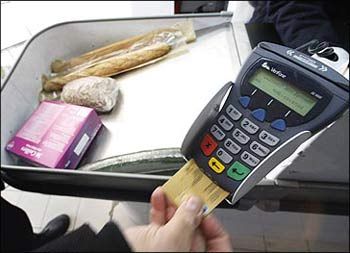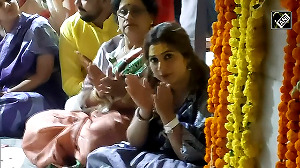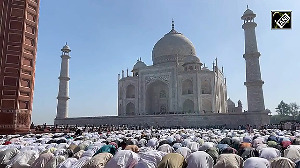
While the tech-savvy have reduced their dependence on cash by 30-40%, many are still not using cards because merchants charge them extra
Many consumers in metros have seen their cash transactions go down significantly because of growing e-commerce, expansion of mobile wallets and online banking.
This is only the start of a march towards becoming a cashless society.
Things are expected to change dramatically in a few years for urban consumers.
Many entities are working on different electronic payment mechanisms that can usher in a digital payment revolution.
Wallet companies are aggressively tying up with retailers to let customers use mobile payments.
National Payments Corporation of India, a company promoted by banks, is working on a mechanism that will allow consumers to transfer money and make payments almost as easily as they send a text message.
The Reserve Bank of India has allowed 11 payments banks and 10 small finance banks to open shop.
RBI also wants to make it cost-effective for banks to provide point of sale terminals (for using credit and debit cards) at small merchant establishments.
And, to incentivise consumers for more electronic transactions, the government has withdrawn the surcharge, service charge or convenience fee on digital payments on cards and online payments for any government service.
Need for change
While digital payments are on a rise in metros, they are only five per cent of all transactions in the country.
The cash to gross domestic product ratio is one of the highest in the world -- 12.4 per cent in 2014, compared to 9.5 per cent in China and four per cent in Brazil. Even the number of currency notes in circulation is high: the US has 34.5 billion notes in circulation, India has 76.5 billion.
The amount of currency in circulation stood at Rs 1,283 lakh crore (Rs 12.83 billion) in 2013-14.
Of this, only a small amount is with banks, but this is changing. Electronic payment methods such as credit, debit and pre-paid cards added about Rs 40,000 crore (Rs 400 billion) to the economy between 2011 and 2015 and created 336,000 jobs, according to a Visa study by Moody's Analytics.
Going cashless brings better tax revenue, more financial inclusion and benefits individuals too.
It gives the convenience of banking from anywhere by smartphones, funds are on tap and money in the bank earns interest.
Also, there is no risk of carrying currency notes and once your spending pattern is known, banks can offer you customised benefits.
Changes to come
One of the biggest hindrances in growth of digital payment is merchants’ reluctance to take PoS terminals, as these are costly, take more time than cash payments and also make business owners accountable.
According to Sunil Kulkarni, deputy managing director of Oxigen Services, there are 15 million retail shops but only 0.6 mn have PoS terminals.
Digital payment players are making PoS either more efficient or eliminating the need for any physical infrastructure. Most of the next-generation payment systems use smartphones for transactions.
Dilip Asbe, chief operating officer at NPCI, says: “An individual will be able to transact across banks on a smartphone using his Aadhaar number, mobile number and a virtual payment address. Each person gets a unique identity and doesn’t need to enter any bank account information.
"It’s interoperable and will work across payment channels, devices and institutions.”
The Paytm app can be used for offline payments.
It has already tied up with retailers such as Cafe Coffee Day and Barista. App-focused payments reduce the need for physical infrastructure and, therefore, can enrol retailers faster.
“By 2020, our goal is to cover three times the PoS terminals that exist today and have half a billion customers on our platform. We want to be present for all possible transactions a customer does,” says Nitin Misra, vice-president, products, Paytm.
The company has also received a licence for a payments bank.
Other wallet players have a similar aim.
Kulkarni of Oxigen says other than using the wallet to send and receive payments at merchants, the company is also implementing a ‘universal’ PoS terminal that not only allows transactions through cards but can be used for recharge and also be a payment wallet. “Our services are interoperable,” he says.
How fast?
India is largely a cash-happy nation. Individuals find transacting in cash easy, fast and it is now a habit. People are not moving quickly towards adopting digital payments.
Even now, 60 per cent of e-commerce business is cash on delivery. “One key thing that needs to be done is to bring down the transaction time and many are working on various solutions.
Also, merchants need to be incentivised,” says Vijay Mani, senior director, Deloitte. Kulkarni of Oxigen says there will be growth but it will be slow and steady.
A large part of the population still don’t have bank accounts.
PRIYANKA BOSE
Investment advisor to start-ups
Digital payments have made life easier for the 29-year-old, who helps start-ups raise funds. Of her total monthly expenses, only 15 per cent of transactions happen in cash.
The rest are online or through use of cards.
Most of her day is spent in travelling for meetings. She uses an app to book a taxi and pays using her e-wallet.
The venues of meetings are mostly coffee shops or restaurants, where she uses her credit card. Most of her other transactions such as payments for mobile, broadband, satellite television, credit card, groceries, outstation travel and shopping are done online. She pays cash for home-delivered food, milk and laundry and to her maid and mechanic.
For this, she maintains only Rs 2,000 in her purse and visits her bank ATM once a week.
“Things have changed drastically since 2010 when I first transacted online to recharge my mobile phone with my debit card.
"At that time, my parents got upset when I informed them that I had applied for a credit card, which was supposed to be for the rich. Middle-class families thought it will always lead to bad debts,” she says. Recently, her grandfather wanted to get a credit card issued, as he wanted to transact online.
There are occasions when retailers charge her two per cent extra for transacting by using cards or offers discounts if she pays by cash but she mostly prefers using her card, as she doesn’t keep a lot of cash.
“I stopped keeping cash after a thief snatched my purse,” she says.
KAPIL DEV BHAGAT
Tourism professional
As Kapil Dev Bhagat, 46, leaves home for office at 9 am, his first job is to fill petrol in his car.
Anyway, the needle is nearly pointing to the empty mark.
“Couldn’t have happened at a worse time,” he fumes, for he needs to be in office by 10 am for a review meeting with his boss.
After reaching the petrol pump, he realises that he does not have enough cash.
The credit card comes to his aid, as usual.
Bhagat’s job with Jet Air Tours is a hectic one and entails a lot of travelling.
Earlier, he used to carry wads of notes but he has increasingly learnt to depend on cards, both credit and debit.
The best part: He has abandoned standing in lengthy queues to pay utility bills like before.
Earlier, he’d make these payments from his home computer. Now, he has downloaded his bank’s app on his smartphone and uses it to pay his bills.
When his boss is not around, he indulges in a bit of online shopping on the office computer as well.
Visits to malls during the weekend and forays to fine dining restaurants are all paid for by the credit card.
On the way back from his office in central Delhi’s Connaught Place to his home in South Delhi’s Mehrauli, he remembers it is his marriage anniversary the next day.
He takes a small detour to the South Extension market and buys ear studs, which his wife had helpfully pointed out to him when they were earlier doing a bit of window shopping in this market.
Once again, his trusted card comes to his rescue for paying the bill.
His final stop for the evening is his neighbourhood Mother Dairy, where, having purchased the daily quota of toned milk, he makes the payment with the card the dairy owner has issued recently.
On the whole, he barely uses any cash during the day, except for that occasional snack or tea that he has in the office canteen.
Life has almost become cashless for him.
The image is used for representational purpose only. Photograph: Reuters













 © 2025
© 2025